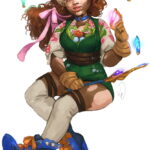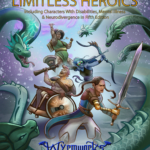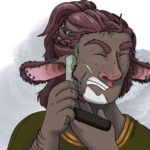Keratin Distribution Difference
Your skin has keratin growing in places besides the usual fingernails and toenails. In people who normally have scales or other hardened skin, this manifests in random protrusions. Because these areas are not well-rooted like nails, they make skin more fragile. If you wear armor, you must wear additional padding to protect your skin from it or lose (IE) hit points per day as it snags, so you have disadvantage on Constitution saving throws in extreme heat as outlined in official fifth edition sources. Because of frequent lesions in your skin, you must succeed on a DC 5 + (IE) Constitution saving throw every day or develop Infection.
Real-world Examples
Epidermolytic Hyperkeratosis, Ichthyosis, Olmsted Syndrome, Pachyonychia Congenita
Assistive Options
A daily bath in salt water, followed by applying oil to the skin will reduce the IE by 1 for one day.
Magical Assistance
Mage Armor and other non-armor protection can be used without the penalties normally associated with this condition.


